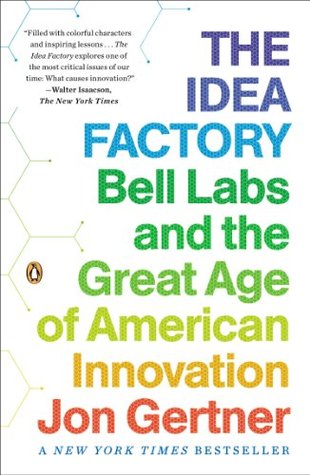More on this book
Community
Kindle Notes & Highlights
At the peak of its reputation in the late 1960s, Bell Labs employed about fifteen thousand people, including some twelve hundred PhDs.
it was believed that basic research preceded applied research, and applied research preceded development. In turn, development preceded manufacture.
An industrial lab, he said, “is merely an organization of intelligent men, presumably of creative capacity, specially trained in a knowledge of the things and methods of science, and provided with the facilities and wherewithal to study and develop the particular industry with which they are associated.”
The industrial lab showed that the group—especially the interdisciplinary group—was better than the lone scientist or small team.
To grow up that way, he would later explain, made you “pay attention to the natural world, to work with machinery, and to know how to solve practical problems and fix things innovatively, with what is on hand.” In Townes’s view, those “farms and small towns are good training grounds for experimental physics.”
There were no telephone ringers at the very start; callers would get the attention of those they were calling by yelling loudly (often, “ahoy!”) into the receiver until someone on the other end noticed.
Measurement devices that could assess things like loudness, signal strength, and channel capacity didn’t exist, so they, too, had to be created—for it was impossible to study and improve something unless it could be measured.
The 512A was an example of how, if good problems led to good inventions, then good inventions likewise would lead to other related inventions, and that nothing was too small or incidental to be excepted from improvement.
He likewise found that at the Labs the experimentalists and theoreticians were encouraged to work together, and that chemists and metallurgists were welcome to join in, too.
Engineering, however, was different. Kelly defined it as the application of science to a problem affecting society. Engineers dipped into the “common reservoir” of science on behalf of their own industries and countries.
By intention, everyone would be in one another’s way. Members of the technical staff would often have both laboratories and small offices—but these might be in different corridors, therefore making it necessary to walk between the two, and all but assuring a chance encounter or two with a colleague during the commute.
They were not to work with their doors closed. They were not to refuse help to a colleague, regardless of his rank or department, when it might be necessary. And perhaps most important, the supervisor was authorized to guide, not interfere with, the people he (or she) managed. “The management style was, and remained for many years, to use the lightest touch and absolutely never to compete with underlings,”
As Jack Morton had said, if you hadn’t sold anything you hadn’t innovated, and without an affordable price you could never sell anything.
ALL WRITTEN AND SPOKEN EXCHANGES, to some degree, depend on code—the symbolic letters on the page, or the sounds of consonants and vowels that are transmitted (encoded) by our voices and received (decoded) by our ears and minds. With each passing decade, modern technology has tended to push everyday written and spoken exchanges ever deeper into the realm of ciphers, symbols, and electronically enhanced puzzles of representation.
One of his paper’s underlying tenets, Shannon would later say, “is that information can be treated very much like a physical quantity, such as mass or energy.”
The bit, Shannon explained, “corresponds to the information produced when a choice is made from two equally likely possibilities. If I toss a coin and tell you that it came down heads, I am giving you one bit of information about this event.”


